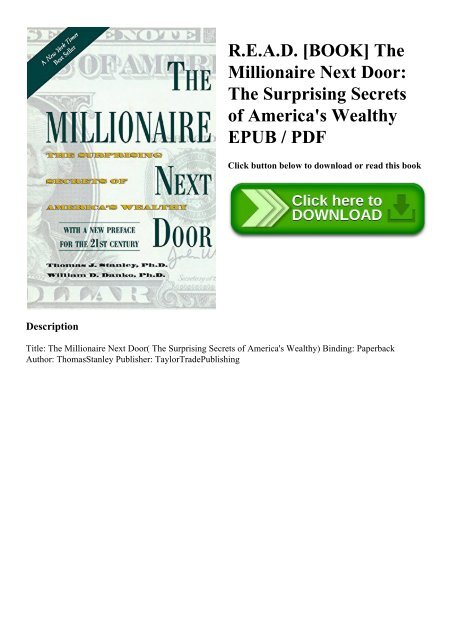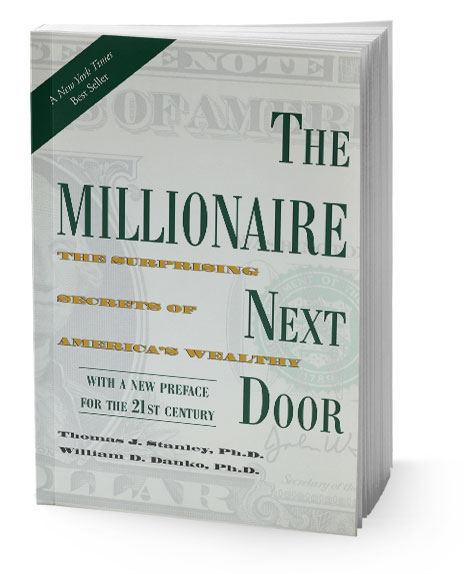

They design extraordinary techniques for saving funds. The seven behaviors of wealthy people comprise being frugal. There is a very slight variance between the income one earns and the wealth that can be accumulated. It lies in the capacity of saving and investing. Being wealthy is not measured in the metrics of earning a high or low income. 50% of wealthy people have businesses, and 20% are retired. The affluent people have been classified into three groups of affluent people in America, which include majority forming 80% are the first –generation who never inherited a penny from their parents.

The Millionaire Next Door Summary There are three groups of millionaires He was the author and co-author of several award-winning books on America’s wealthy, including the New York Times’ best sellers The Millionaire Next Door and The Millionaire Mind. Stanley (1944 – February 28, 2015) was an American writer and business theorist.
#Book the millionaire next door how to#

The Millionaire Next Door: The Surprising Secrets of America’s Wealthy is a 1996 book by Thomas J. So, if you are the millionaire next door, I applaud you! And even if you are not…let’s still be friends.The Surprising Secrets of America's Wealthy
#Book the millionaire next door full#
We celebrate it, write movies about it, and our libraries are full of books about it. Many hard-working Americans create life-changing opportunities for their children and grandchildren through hard work, systematic saving, and investing. The fact is America is still the land of opportunity, where poor people can (and do) go from having nothing to significant wealth. The myth is that most wealthy Americans inherited their money, or had a large windfall (e.g., stock options). I find the truth about “the millionaire next door” to be much more motivating and inspiring than the myth. On average, they save/invest 20% of their realized household income.Most millionaires who own their own businesses are in dull, low-tech businesses, such as construction trades, auctioneers, farmers, owners of mobile-home parks, pest controllers, coin and stamp dealers, etc.Less than 20% inherited significant money (10% of their wealth). 80% are first generation rich and self-made.97% are homeowners and have (on average) lived in the same home for more than 20 years.83% attended public schools and 80% have college degrees.

In addition, cars are typically not current model year and are rarely leased. Ford is the second most popular car brand behind Mercedes, but ahead of BMW.


 0 kommentar(er)
0 kommentar(er)
